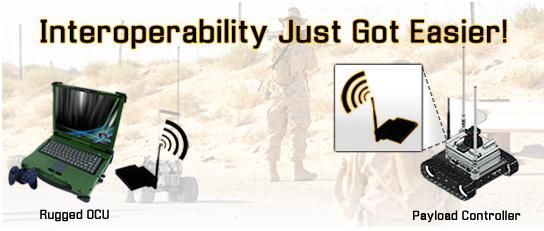Many people regard “end-user input” as something that happens at the end of a development process. However, the role of social media in the recent unrest in Middle East reminds us that end-users can be used for more than just “tweaking” solutions prepared by professionals. Faced with government cut-off of networking services, organizers are finding ingenious ways of using communication platforms. More and more, “ordinary people” are demonstrating creativity in all stages of the solution-development process.
Numerous examples of end-user resourcefulness are detailed in the Economist’s “Not just talk.” In developing countries, a cell-phone may be the only available computer, so people make the most of it. Farmers look for the best market prices, consumers track fake drugs, students take English lessons, and the unemployed look for work.
Cell-phones, especially smart phones, have also attracted the attention of the Defense establishment. While there has been formal research of smart phone applications, (The War App: Smart Phones Could Control Drone Camera discusses one of many efforts), the Defense community is also turning to end-users as a source of development.
As reported in by IStrategyLabs in “Apps for the Army Winners – Doubling Our Expectations,” a contest open to soldiers and civilians employed by the US Army resulted in many useful mobile and web applications. The success of this competition defied skepticism that said:
“ · The Army is too big and slow to do something like this
· Soldiers don’t know how to code
· Soldiers don’t know anything about security
· The apps will be low quality – leave the development to the pros
· The process will kill any excitement in the program”
In fact, “This program has taken the software development life-cycle down from an average of more than 1 year to roughly 90 days. Soldiers are now empowered and incentivized to build solutions to their own problems rather than rely on outside actors to big them the tools they need.”
The imagination of soldiers extends beyond communication solutions. Reputedly, the first armed robot used in theater was an ordinary IED-hunting Unmanned Ground Vehicle that had been jerry-rigged with weaponry by forward-placed soldiers. In NDIA’s ‘Robot Army’ in Afghanistan Surges Past 2,000 Units, Marine Corps Lt. Col. Dave Thompson, Project Manager for the Joint Project Office for Robotics systems (JPRO), indicated that soldiers are maintaining their inventiveness, “They are using them in ways we never expected.”
Early input by end-users accelerates the development process and improves the quality for the delivered solution. AMREL is in the solutions business, so we constantly seek early input from end-users at the Robotics Rodeo, Tactical Network Topology (TNT) field experiments and other events.
 Every once in a while, someone asks me to translate military jargon, or more often summarize a lengthy statement into an “executive summary.” Here are a couple of examples of my attempts to convert a dense forest of words into a simple “take home message.”
Every once in a while, someone asks me to translate military jargon, or more often summarize a lengthy statement into an “executive summary.” Here are a couple of examples of my attempts to convert a dense forest of words into a simple “take home message.” Every once in a while, someone asks me to translate military jargon, or more often summarize a lengthy statement into an “executive summary.” Here are a couple of examples of my attempts to convert a dense forest of words into a simple “take home message.”
Every once in a while, someone asks me to translate military jargon, or more often summarize a lengthy statement into an “executive summary.” Here are a couple of examples of my attempts to convert a dense forest of words into a simple “take home message.”


 griping about product development. Trying to deliver a system that the government wants was impossible, because of the time lag. Who knows what the Department of Defense would want or need 2 or 5 years from now? All participants in the meeting agreed that it was the governments’ fault. The Feds simply weren’t telling us what they wanted. Well, it’s not for the lack of trying. It seems every week there’s a new roadmap, report, vision, or long-term plan. I recently reviewed my personal collection of downloaded documents and came up with:
griping about product development. Trying to deliver a system that the government wants was impossible, because of the time lag. Who knows what the Department of Defense would want or need 2 or 5 years from now? All participants in the meeting agreed that it was the governments’ fault. The Feds simply weren’t telling us what they wanted. Well, it’s not for the lack of trying. It seems every week there’s a new roadmap, report, vision, or long-term plan. I recently reviewed my personal collection of downloaded documents and came up with:  in his article, “U-Turn: Unmanned Systems Could be Casualties of Budget Pressures” (Armed Forces Journal). In an era of shrinking budgets, he worries that funding for unmanned systems will suffer.
in his article, “U-Turn: Unmanned Systems Could be Casualties of Budget Pressures” (Armed Forces Journal). In an era of shrinking budgets, he worries that funding for unmanned systems will suffer. dollars, we’d pay off the national debt. One particular acronym, OPV (Optionally Piloted Vehicles), is popping up all over the place. Northrop Grumman unveiled
dollars, we’d pay off the national debt. One particular acronym, OPV (Optionally Piloted Vehicles), is popping up all over the place. Northrop Grumman unveiled  Unmanned Ground Vehicles (UGVs). “We are moving along that spectrum from tele-operating to semiautonomy where you can send a robot from point A to point B without any intervention,” said U.S. Marine Corps Lt. Col. David Thompson, project manager with the Robotic Systems Joint Program Office (
Unmanned Ground Vehicles (UGVs). “We are moving along that spectrum from tele-operating to semiautonomy where you can send a robot from point A to point B without any intervention,” said U.S. Marine Corps Lt. Col. David Thompson, project manager with the Robotic Systems Joint Program Office (

